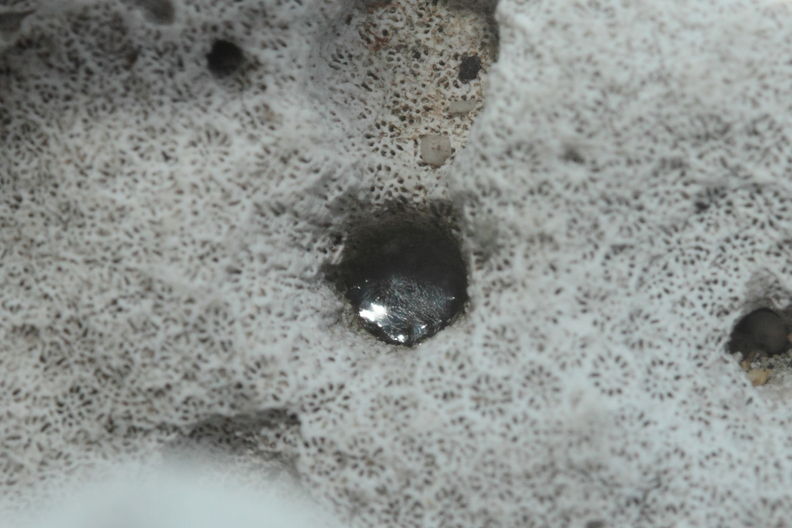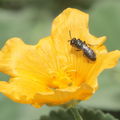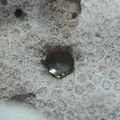26/105

Hylaeus anthracinus nest in coral rock, Puuhonua O Honaunau NHP. While bees have often been seen entering holes in coral rubble and seem to be most abundant where there is a lot of it, this is the first definite evidence that they're nesting in it. The cellophane-like substance is a secretion that the female bee produces to line the nest cell and make it waterproof; when filled up, she seals it up like this until the new adults emerge.
- Posted on
- Sunday 24 January 2016
- File
- Hylaeus anthracinus Puho 0999.jpg
- Filesize
- 578 KB
- Tags
- Colletidae, Hawaii, Hawaiian native arthropods, Honaunau, Hylaeus, Hylaeus anthracinus, Hymenoptera, Kona, Puuhonua O Honaunau NHP, South Kona
- Visits
- 5354
- Rate this photo
- Make
- Canon
- Model
- Canon EOS REBEL T1i
- DateTime
- 2014:02:09 10:36:56
- ExposureTime
- 1/200
- ApertureFNumber
- f/13.0
- iptc_keywords
- Kona, Hawaii, South Kona, Honaunau, Puuhonua O Honaunau NHP, Hymenoptera, Colletidae, Hylaeus, Hylaeus anthracinus, Hawaiian native arthropods
- iptc_caption
- Hylaeus anthracinus nest in coral rock, Puuhonua O Honaunau NHP. While bees have often been seen entering holes in coral rubble and seem to be most abundant where there is a lot of it, this is the first definite evidence that they're nesting in it. The cellophane-like substance is a secretion that the female bee produces to line the nest cell and make it waterproof; when filled up, she seals it up like this until the new adults emerge.


0 comments